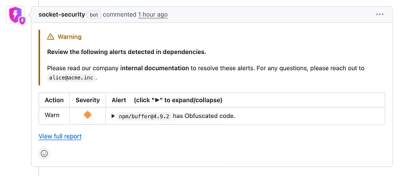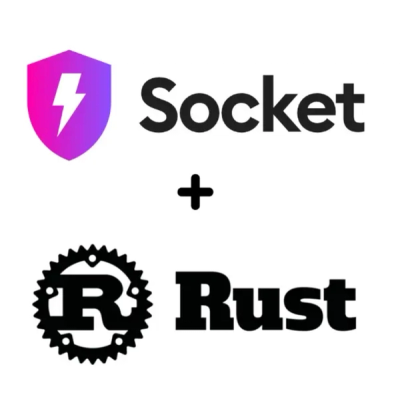
Security News
Crates.io Users Targeted by Phishing Emails
The Rust Security Response WG is warning of phishing emails from rustfoundation.dev targeting crates.io users.
peer-relay is a p2p message relay that works in nodejs and in the browser. It supports WebSockets and WebRTC as transports. Sending a small amount of message to a large number of peers isn't easy to do with WebRTC since the time and resource cost of starting a WebRTC connection can be high. Instead of connecting directly to each peer you need to send message to, it can be better to relay that message through the peers you are already connected to; especially if you only need to send just a few messages. Peer-relay takes care of this by relaying messages for you and providing a simple interface for sending and receiving messages.
peer = new PeerRelay([opts])Creates a new peer that becomes apart of the relay network
The following fields can be specified within opts:
port can only be specified if the peer is running nodejs since start a WebSocket server is not possible in a browser. Every peer should specify at least on bootstrap peer (unless that peer is the first/only peer in the network)
peer.idThe peer's id. id is 160 bit Buffer.
peer.connect(id)Forms a direct connection with the given peer. id is the id of the peer to connect to and must be a Buffer.
peer.disconnect(id)Disconnect the a currently connected peer with id.
peer.send(id, data)Send data to the peer with and id equal to id. The peer does not have to be directly connected to because it will be relayed through other peers. This is similiar to UDP in that message delivery or order is not guaranteed.
peer.destroy([cb])Destroy the peer and free it's resources. An optional callback can be specified and will be called when all the resources are freed.
var socket = new PeerRelay.Socket([opts])Creates a new dgram like socket that uses peer-relay to send messages between peers. This allows for peer-relay to be used by programs that expect the dgram interface. This method accepts the same arguments as the PeerRelay constructor. The returned object tries to match the interface provided by dgram's Socket.
socket.peer references the underlying PeerRelay instance.
peer.on('message', function (data, from) {})Fired when a message addressed to the peer was received. from is the Buffer id of the peer that sent the message.
peer.on('peer', function (id) {})Fired when a peer has been directly connected to
FAQs
relay messages through peers in a network
The npm package peer-relay receives a total of 0 weekly downloads. As such, peer-relay popularity was classified as not popular.
We found that peer-relay demonstrated a not healthy version release cadence and project activity because the last version was released a year ago. It has 1 open source maintainer collaborating on the project.
Did you know?

Socket for GitHub automatically highlights issues in each pull request and monitors the health of all your open source dependencies. Discover the contents of your packages and block harmful activity before you install or update your dependencies.

Security News
The Rust Security Response WG is warning of phishing emails from rustfoundation.dev targeting crates.io users.

Product
Socket now lets you customize pull request alert headers, helping security teams share clear guidance right in PRs to speed reviews and reduce back-and-forth.

Product
Socket's Rust support is moving to Beta: all users can scan Cargo projects and generate SBOMs, including Cargo.toml-only crates, with Rust-aware supply chain checks.